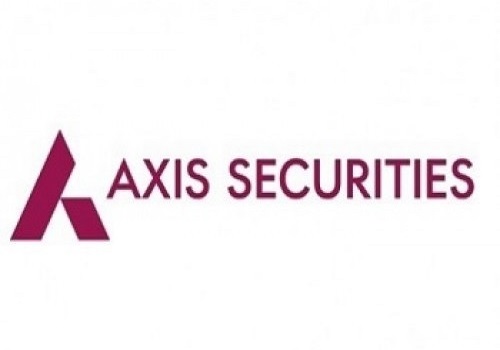Commodity Weekly Report by Choice Broking

Follow us Now on Telegram ! Get daily 10 - 12 important updates on Business, Finance and Investment. Join our Telegram Channel
Gold
Comex Gold spot has gapped lower in the beginning of the week and traded back & forth, rebounded marginally from the dips made in beginning of the week and closed at $2650 / ounces. On the other side, MCX Gold February contract has sustained at 75601 and managed to close on a positive note at 77127 per tola.
The recent fall in Gold prices can be attributed to the cease-fire agreement between Israel and Lebanon, which eased global tensions and reduced demand for safe-haven assets like Gold. However, ongoing geopolitical risks in the Middle East and Europe could still support gold in the coming weeks. Looking ahead, all eyes are on the U.S. Federal Reserve's meeting on December 17-18, 2024, with the CME Fed Watch tool currently showing a 66% chance of a 25- basis-point rate cut, up from 53% just a week ago. 10-Year T- yields continued to decline for 2nd consecutive week, closed at 4.18%, fall by 22 basis points.
Gold prices has continued to trade in positive momentum, moved in Rising channel formation. Price has sustained over all key moving averages i.e. 50, 100 and 200-DMA level placed at 76386, 74952 and 72163 respectively. Key support would be at Daily SAR level placed at 75280. On the other hand, crucial resistance would be at previous week’s peak of 78475, breach of this level will accelerate upward momentum in Gold.
The overall trend in Gold price is expected to be Moderately Bullish in the coming week, and traders should keep an eye on key US economic data such as Manufacturing & Services numbers alongside key employment data such as Avg. hourly earnings, Non-farm emp. Change, Unemployment rate, Unemployment Claims, which are scheduled to be in next week.

Silver
Silver March contract has continued to trade in a bearish trend after previous week’s redemption, however rebounded marginally from week’s lows towards the weekend and closed at 91209. Similarly, LBMA Silver spot has posted fall of -2.25% in past week, having pullback from $29.64 and managed to settle at $30.62 / ounces.
The recent cease-fire deal between Israel and Lebanon momentarily eased tensions in the global markets, reducing demand for bullion metals. Since silver is more volatile than gold, it has experienced a steeper decline. That said, tensions between Israel and Lebanon are still ongoing, as both sides have accused each other of violating the cease-fire deal. Additionally, the ongoing conflict between Russia and Ukraine is expected to continue supporting demand for safe-haven assets. On Daily chart, price has tested the hurdle near Bearish trend line, sustaining over the key support low of 88918. Immediate resistance would be at 20-DMA level placed at 92,389. Daily SAR level placed on a higher side at 93428.
Gold / Silver ratio which is also known as Mint Ratio, has closed on a indecisive note, having throwback from 88.43, closed at 86.54.
RSI levels has remained around 50 level on all key chart. Also, we can observe convergence on MACD alongside declining negative histograms on Daily chart which collectively suggest potential trend reversal in Silver price. Traders may look forward for key levels for further course of price action in Silver.

Copper
Looking at the Copper Futures chart, the price action suggests a bearish inclination as it continues to trade below the key moving averages, such as the 20, 50 and 200-EMA. The formation of lower highs and lower lows further confirms the downtrend. The trendline resistance marked on the chart reinforces the bearish momentum, as prices struggle to break above it convincingly.
Copper prices, along with other industrial metals, remain under pressure due to a stronger dollar and escalating concerns over U.S.-China trade tensions considering the proposed tariffs President-elect Donald Trump’s. The appointment of Jamieson Greer as the next U.S. trade representative has further intensified these concerns, with Greer previously describing China as a "generational challenge" for the U.S. While domestic demand in China, especially for home appliances and automobiles, remains robust, weak overseas demand continues to cloud the outlook for copper and other industrial metals.
The RSI indicator is near 45, indicating weak momentum and limited buying strength. Recent sessions have seen reduced volume, indicating limited bull participation. Immediate support is around 786.10, with the next level at 764.60. A recovery is needed for the price to sustain above 819.70, coinciding with trendline and moving averages. A breakout above this level, supported by strong volume, could invalidate the bearish bias.

Crude Oil
The daily chart of Crude Oil Futures exhibits a bearish structure, with prices facing rejection at the descending trendline that has acted as a strong resistance in recent months. The price is currently trading below key moving averages, including the 50-day, 100-day, and 200-day moving averages, which further confirm the bearish momentum. A series of lower highs and lower lows reinforces the downtrend, with the RSI hovering near the 47 mark, indicating weak buying strength and potential continuation of the bearish bias.
Oil drifted lower during the week following the truce between Israel and Lebanon-based Hezbollah, tariffs threats by Donald Trump, jitters over the upcoming meet of OPEC, and thin holiday trading. OPEC and its allies meet next week (Dec 5) to decide whether to resume curtailed production, ahead of a potential supply glut next year. However, concerns over the durability of the agreement between Israel and Hezbollah might levy some support for Oil going ahead.
Immediate support levels can be seen near Rs.5,640 and Rs.5,505. A decisive breakdown below Rs.5,640 may lead to intensified selling pressure, targeting the Rs.5,508 level or lower. On the upside, Rs.5,942 acts as a significant resistance level, and the price must decisively breach this level to reverse the bearish outlook. Volume analysis also reveals diminishing interest during price pullbacks, signaling a lack of bullish conviction. Overall, the chart suggests a bearish view for the short term, with further downside expected if the support levels fail to hold.

Natural Gas
U.S. natural gas futures surged nearly 5% on Friday, posting a monthly gain. The rise was driven by expectations of colder weather, which is anticipated to boost heating demand and prompt utilities to draw more gas from storage. Front-month petrol futures for January delivery on the NYMEX closed 16 cents higher, or 4.9%, at $3.363 per mmBtu. The contract has gained more than 24% this month. Despite the throwback, natural gas prices closed up 7.5% for the week, with a doji candle at the top indicating hesitation.
Since Nat-gas inventories for the week ending November 22 dropped -2 bcf against predictions of -3 bcf and far above the 5-year average draw for this time of year of -30 bcf, Wednesday's weekly EIA report was negative for nat-gas prices. With nat-gas inventories up +3.4% year over year and +7.2% over their 5-year seasonal average as of November 22, there is no shortage of nat-gas. According to technical analysis, the US natural gas market has maintained solid support levels at $3.03 (20-day EMA) and $2.78 (50-day EMA), while resistance close to $3.63 is still a significant obstacle for bulls.
The December MCX Natural Gas contract in India finished at 284, with resistance near 302.1 and support between 266.3 and 252.1, aligning with the worldwide trend. The technical picture for natural gas appears optimistic, with prices trading above a key support area, indicating a possible reversal from higher levels. The Relative Strength Index (RSI) is above the acceptable level, indicating that momentum may continue to strengthen. Moving forward, traders will constantly monitor inventory data, LNG export levels, and weather forecasts, all of which will be critical in predicting the next price breakthrough.

For Detailed Report With Disclaimer Visit. https://choicebroking.in/disclaimer
SEBI Registration no.: INZ 000160131












 320-x-100_uti_gold.jpg" alt="Advertisement">
320-x-100_uti_gold.jpg" alt="Advertisement">












